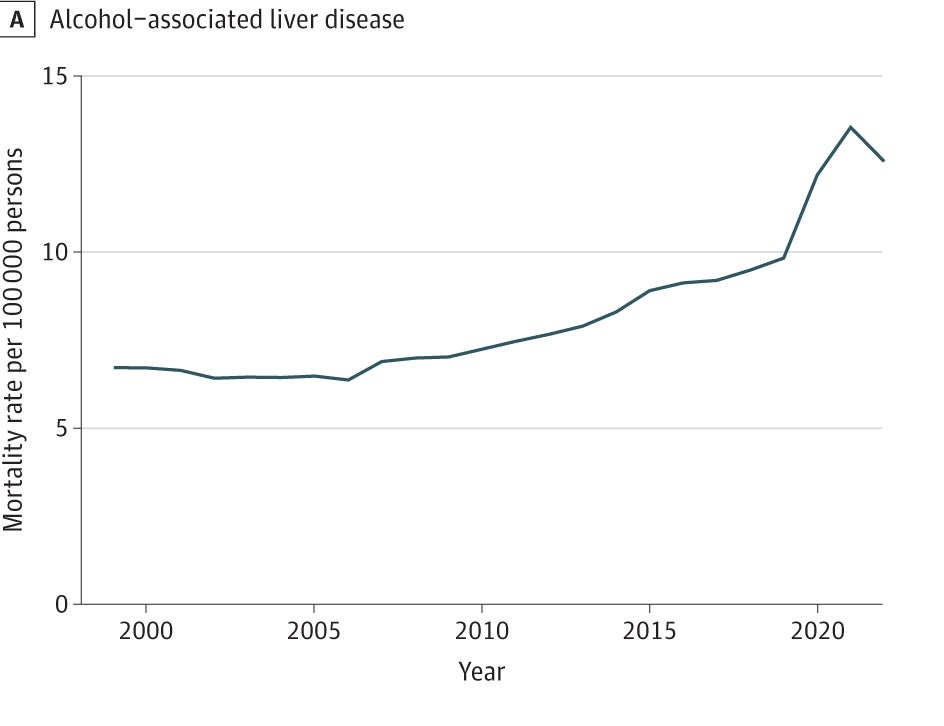The number of alcohol-related deaths in the U.S. has been rising over the course of the past two decades.
On Wednesday, a group of physicians from across the country said that liver disease deaths had roughly doubled over the course of 20 years, noting significant acceleration during and following the Covid pandemic. Alcohol consumption can damage the liver, with the sharp rise in issues coming at a time when other liver diseases like hepatitis C were falling.
“Mortality from alcohol-associated liver disease has increased significantly across most demographic groups in the US from 1999 to 2022,” they said in their findings.
Looking at 436,814 alcohol-associated liver disease deaths recorded during that period, they found that the mortality rate had surged from 6.7 to 12.5 deaths per 100,000 people.
The annual increase was higher among women than men, and young people showed “concerning trends.”

That was also the case among American Indian or Alaska Native populations, which faced the highest death rates. Those increased from about 25 to nearly 47 per 100,000 between 1999 to 2022.
Among white Americans, the rates also rose. Deaths among Black Americans initially fell, but then spiked in 2019. They rose about 21 percent annually through 2022.
Before and during the pandemic, mortality rates also surged an annual average of 9 percent from 2018 to 2022. Researchers pinned the rise during this period on pandemic-related stressor, such as financial insecurity and social isolation, which led to an increase in drinking.
The research was published in the journal JAMA Network Open.

The news comes after similar research presented last month found the number of annual alcohol deaths due to cancer had doubled in recent years, rising from 11,896 in 1990 to 23,207 by 2021. Those conclusions also noted a spike during the pandemic, and upticks among women.
In both cases, the authors said that these worrying results indicate the “urgent” need for enhanced prevention.
“These findings demand comprehensive public health strategies focused on enhanced screening, improved addiction treatment access, and targeted interventions for high-risk groups. Long-term monitoring and research into intervention effectiveness are crucial for addressing this growing public health crisis,” the doctors said.







